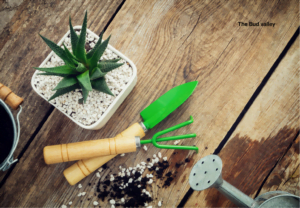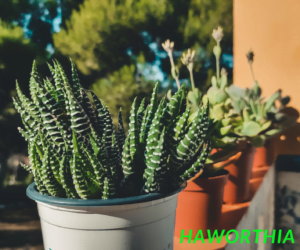
A plant that can survive for a long time in a desert has a much higher chance of survival if you plant it in your home. I collected the Haworthia from my trip to the African desert in 2015 because I liked the look and qualities of this plant. I heard and knew so much that I collected this plant. Later, I came to know that there are about 60 species of this tree, and it can live for 50 years and reach a maximum height of 4 cm to 25 cm among the varieties of this tree. Besides, these plants often flower during summer.
In this blog, I will try to present all the information from my personal experience, from planting this tree till now, what steps I take to take proper care of this tree, and how to grow this tree very fast. All secrets and information are personal. I will try to tell from experience, so I hope from this blog you can know all the information about this tree correctly, and very easily you can plant this tree in your home.
Ø Common Name |
Haworthia, Zebra cactus, Pearl plant, star window plant, Cushionaloe |
Ø Botanical Name |
Haworhia |
Ø Family |
Asphodelaceae |
Ø Plant Type |
Succulent, perennial |
Ø Mature Size |
3-5 in.Altitudinous and wide; some species can reach 20 in. altitudinous |
Ø Sun Exposure |
Full, partial |
Ø Soil Type |
Sandy, well-drained |
Ø Soil pH |
Neutral |
Ø Bloom Time |
Summer |
Ø Flower Color |
White |
Ø Hardiness |
9-11, USA |
Ø Native Area |
Africa |
How To Care Haworthia at Home
Lighting
This plant can tolerate direct sunlight but thrives best in the morning sun’s light. However, prolonged exposure to sunlight may lead to the tree dying or burning its leaves; thus, it cannot be kept in strong sunlight. Therefore, always aim to provide indirect sunlight to this plant to promote normal growth and keep it fresher without any damage.
Watering
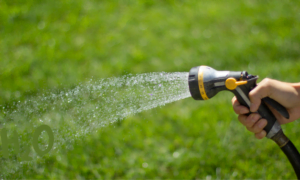
Water is essential for every plant; without water, no plant can survive for a long time, so it needs a lot of water. However, this tree has to be watered according to certain rules. No extra water can be given; it is best to water this tree after the root of the tree is completely dry, i.e., after the soil is dry. The amount of water given to this plant should be reduced even more during winter because the roots of the plant are more likely to rot during winter. So, very carefully water this plant after the soil is dry; then this plant will not be harmed.
Potting Mix
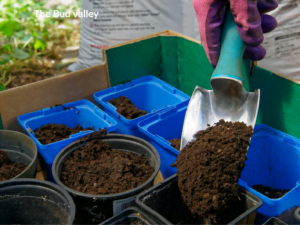
A regular potting soil mix with perlite or sand should be prepared properly, and drainage must be arranged so that water never stagnates. A good drainage system, specially designed for succulents and cacti, should be used.
Container
A pot should be selected that does not allow water to pool under it, allowing the soil to breathe and excess moisture to evaporate. A terracotta pot with drainage holes will fulfill this requirement well.
Temperature

Temperature plays a crucial role in the growth and expansion of a plant as its normal growth depends on it. Therefore, this plant cannot tolerate excessive heat or extremely cold weather. Generally, it can withstand temperatures between 60°F-80°F or 15°C-27°C. Extremely cold temperatures are not suitable for this plant. I always ensure to care for my houseplants within this temperature range to prevent any damage to them.
Fertilizing

If fertilizer is applied correctly—that is, in the proper amount and at the appropriate time—plants benefit.. When a plant has sufficient nutrients in the soil, i.e., at the base of the plant, additional fertilizer will cause the plant to die. Fertilize this plant carefully, as damage may occur if timing is not considered. Over-fertilizing this plant is never the right thing to do, so a small amount of fertilizer should be applied in spring and summer.
Humidity

Humidity often plays a crucial role for a plant, and excessive humidity becomes very dangerous. Therefore, excess humidity is perilous for this plant, so attention must be paid to the humidity level where the plant is kept. It can adapt to low humidity levels, but excess humidity is not tolerable. A problem caused by excess moisture is fungal issues. Due to fungal problems, the plant’s leaves become defoliated, resulting in the loss of its natural beauty and hindering normal growth, ultimately leading to the plant’s demise.
Propagation
Propagate Haworthias through offsets, leaf cuttings, or division. Allow offsets to mature before separating them from the parent plant, and ensure any cuttings callus over before planting to prevent rot.
Pests and Diseases
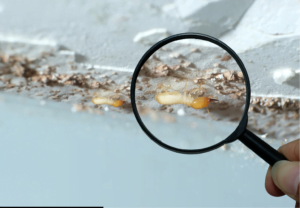
Every plant is susceptible to pests, and the pests that can attack this plant are millipedes, spiders, and termites. To address an infestation, treat the affected area with insecticidal soap or neem oil for immediate treatment. Additionally, avoid overwatering, as this can lead to fungal diseases of the leaves and root rot.
Repotting
When a plant is potted, i.e., growing out of a pot, the soil becomes compacted. This repotting is done in spring and early summer to reduce stress on the plant, and so far, I have been repotting in summer and spring.
The information I have presented so far about how to care for Haworthia and how to encourage its rapid growth is based on my practical experience. Since 2015, I have been planting and managing these plants, and I present this information based on my own experience. I can say with 100% certainty that if you follow the proper instructions carefully and plant accordingly, you can ensure that your tree will grow properly, survive for a long time, and not suffer any kind of damage.


